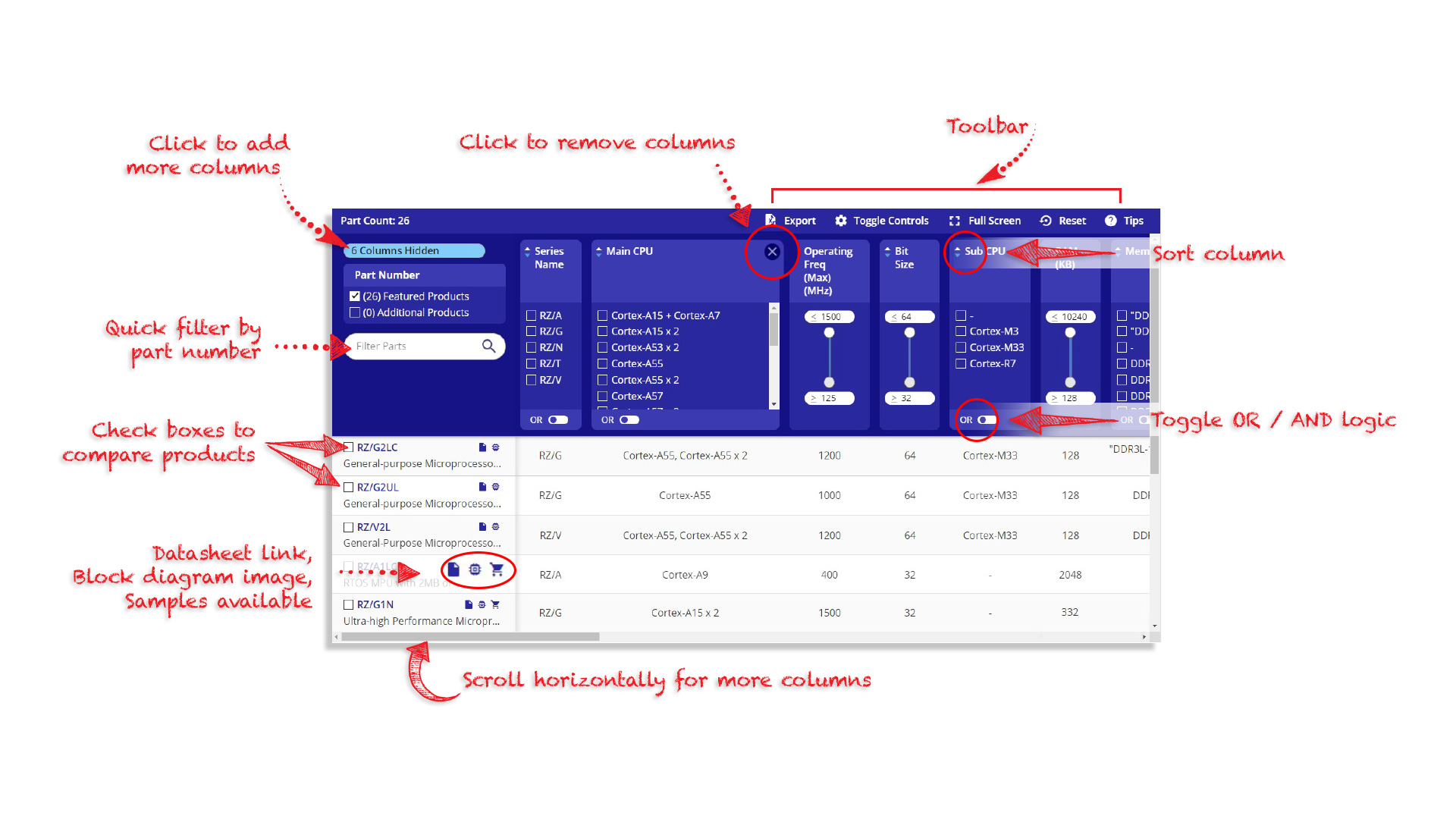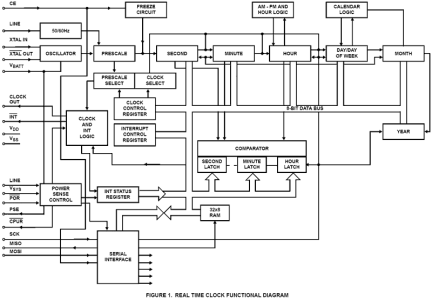-
-
-
Design Resources
- Design & Development
- Featured Design Tools
- Partners
- Content & Training
-
Support
-
Support Forums
Get help from our expert Renesas technical staff and community.
- Technical Support
- Training & Events
- Quality & Packaging
-
Support Forums
-
Sample & Buy
-
Buy Direct from Renesas
Customers can now choose the convenience of buying direct from Renesas.
- Ordering Resources
-
Buy Direct from Renesas
CDP68HC68T1
circleActiveSamples AvailableCMOS Serial Real-Time Clock With RAM and Power Sense/Control
Overview
Description
The CDP68HC68T1 Real-Time Clock provides a time/calendar function, a 32 byte static RAM, and a 3 wire Serial Peripheral Interface (SPI Bus). The primary function of the clock is to divide down a frequency input that can be supplied by the on-board oscillator in conjunction with an external crystal or by an external clock source. The internal oscillator can operate with a 32kHz, 1MHz, 2MHz, or 4MHz crystal. An external clock source with a 32kHz, 1MHz, 2MHz, 4MHz, 50Hz or 60Hz frequency can be used to drive the CDP68HC68T1. The time registers hold seconds, minutes, and hours, while the calendar registers hold day-of-week, date, month, and year information. The data is stored in BCD format. In addition, 12 or 24 hour operation can be selected. In 12 hour mode, an AM/PM indicator is provided. The T1 has a programmable output which can provide one of seven outputs for use elsewhere in the system. Computer handshaking is controlled with a wired-OR interrupt output. The interrupt can be programmed to provide a signal as the result of:
- An alarm programmed to occur at a predetermined combination of seconds, minutes, and hours.
- One of 15 periodic interrupts ranging from sub-second to once per day frequency.
- A power fail detect. The PSE output and the VSYS input are used for external power control. The CPUR output is available to reset the processor under power-down conditions. CPUR is enabled under software control and can also be activated via the CDP68HC68T1's watchdog. If enabled, the watchdog requires a periodic toggle of the CE pin without a serial transfer.
Features
- SPI (Serial Peripheral Interface)
- Full Clock Features
- Seconds, Minutes, Hours (12/24, AM/PM), Day of Week, Date, Month, Year (0 to 99), Automatic Leap Year
- 32 Wordx8-Bit RAM
- Seconds, Minutes, Hours Alarm
- Automatic Power Loss Detection
- Low Minimum Standby (Timekeeping) Voltage 2.2V
- Selectable Crystal or 50/60Hz Line Input
- Buffered Clock Output
- Battery Input Pin that Powers Oscillator and also Connects to VDD Pin When Power Fails
- Three Independent Interrupt Modes
- Alarm
- Periodic
- Power-Down Sense
- Pb-Free Available (RoHS Compliant)
Comparison
Applications
Design & Development
Models
ECAD Models
Schematic symbols, PCB footprints, and 3D CAD models from SamacSys can be found by clicking on products in the Product Options table. If a symbol or model isn't available, it can be requested directly from the website.

Product Options
Pkg. Type |
Carrier Type |
Moisture Sensitivity Level (MSL) |
Price (USD) | 1ku |
Buy / Sample |
|
|---|---|---|---|---|---|
| Part Number | |||||
CDP68HC68T1M2Z circleActive Samples Available |
SOICW | Tube | 3 | 15.16 | Get Samples, |
CDP68HC68T1M2Z96 circleActive |
SOICW | Reel | 3 | 14.29 |

Tips for Using This Parametric Table:
- Hide Filters button in header: Collapse or expands filters
- Column sort buttons in header: Sort Column alphabetically / numerically descending or ascending
- Reset button in header: Reset all filters to the page default
- Full Screen button in header: Expand the table to full screen view (user must close out of full screen before they can interact with rest of page)
- Export button in header: Export the filtered results of the table to an Excel document
- Filter parts search bar in header: Type to filter table results by part number
- Hide column button in column headers: Select to hide columns in table
- AND / OR toggle switches in header: Toggles the logic of this particular filter to be “AND” or “OR” logic for filtering results
- Multiselect checkboxes at beginning of each row in table: Select these checkboxes to compare products against each other
- Document icon next to product name in row: View the featured document for this product
- Chip icon next to the right of the document icon in row: View the block diagram for this product
- Cart icon to the right of the chip icon: Indicates that samples are available for this product
